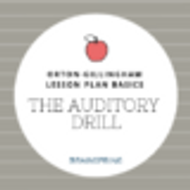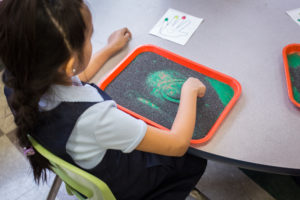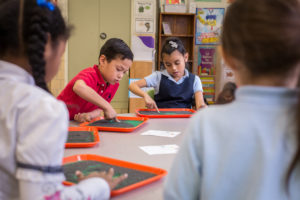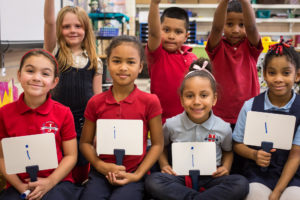What is the Orton-Gillingham Auditory Drill?
Posted by Brainspring on 19th Feb 2019
Welcome to the second post in our series on Orton-Gillingham lesson plan basics! Two weeks ago, we discussed the Three-Part-Drill and how it typically begins with the Visual Drill. Today, we will briefly discuss the second part of the Three-Part-Drill, the Auditory Drill.
What is the Auditory Drill?
Teachers ask students to spell the sound they hear. Sounds chosen should only be sounds that have been previously introduced. Students will write the grapheme representing the sound that was just heard. They then say the letter name(s) and underline from left to right while saying the sound.
What is the Purpose of the Auditory Drill?
During the Auditory Drill, learned sounds are practiced through spelling, which fine-tunes the sound/symbol relationship and builds automaticity. As we mentioned in our Visual Drill post, David Kilpatrick, author of Equipped for Reading Success, makes it clear that automatic letter-sound knowledge is foundational for both efficient phonic decoding and for permanent word storage via orthographic mapping.
Auditory Drill Activity
Follow these instructions for a basic auditory drill activity:
Teacher: “show me how to spell the sound /b/”
Students: form the letter while saying the letter name “b”, underline from left to right and say the letter sound “/b/”
The Auditory Drill can be completed as a whole class activity, in small groups, or one-to-one. Students can write their responses in a sand tray (which is highly multisensory) or teachers can try having students write responses on individual whiteboards as seen in the picture below. The Auditory Drill should be a quick activity that only takes a couple of minutes.
Auditory Drill for Different Learning Styles
The Auditory Drill can be tailored for diverse learning styles. For students with auditory processing disorders, have the student repeat the sound before writing. You can also say, "Watch my mouth," or ask if they would like the Key Word. Kinesthetic learners benefit from incorporating movements, creating a physical memory of the sounds.
Students with ADHD or attention difficulties might need shorter, more frequent sessions to maintain focus. English Language Learners (ELLs) benefit from explicit sound instruction and bilingual resources. Adapting the drill for different learners will help maximize learning effectiveness.
Challenges & Solutions
Maintaining student engagement in class can be challenging. To prevent boredom, teachers can use the activity outlined above (see video below) or other activities to provide fun learning in the classroom and help students focus. This should be a quick activity and can be used effectively during transition periods.
Additionally, creating a positive classroom environment and celebrating small successes can overcome resistance and frustration to these learning activities. By addressing these challenges, the Auditory Drill remains effective and engaging.
Interested in learning more? Watch this quick video on using the sand tray.
See our posts on the rest of the parts of the Three-Part Drill:
Written by Brainspring Educator Academy




